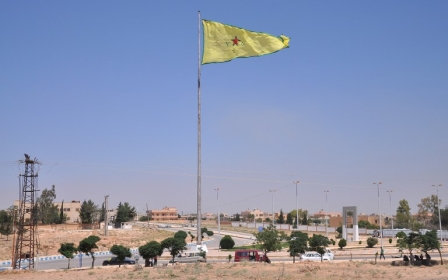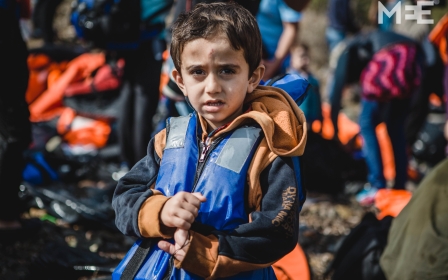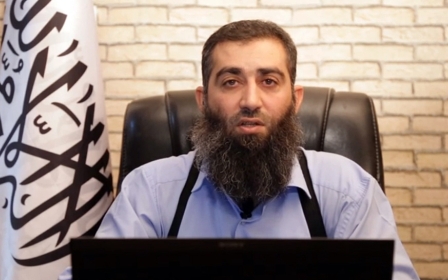Russia and Iran diverging on Syria

After nearly a month of conducting daily air strikes, Russia is beginning to reveal its political calculations and strategic intent in Syria.
The Russian outreach to the Free Syrian Army (FSA), whilst dismissed as disingenuous by the West, is in fact a reflection of Russia’s desired outcome.
Fearful of getting embroiled too deeply into the Syrian quagmire, Russia is all too aware that it needs Washington’s - and by extension the Gulf States’ - help to steer the conflict toward an endgame.
Meanwhile, lacking Russia’s diplomatic reach, Iran is mostly focused on the battle on the ground, not only to shore up the position of the embattled Syrian government, but equally importantly to protect its Lebanese ally Hezbollah from the fallout of the conflict.
Unlike Russia, the Islamic Republic cannot afford to see elements of the armed Syrian opposition gain even minimal influence in Damascus as part of a final peace settlement.
To that end, Iran does not have a pressing stake in the territorial integrity of Syria. What’s important to Iran is that the Syrian state maintains full control over the “useful” parts of Syria, comprised of Damascus, Quneitra province, much of the central regions and the entire Mediterranean coast.
By reaching out to elements of the armed opposition, Russia is in effect signalling a strong preference for territorial integrity and a return to the status quo ante, which can only be achieved at the expense of the ideological cohesion of the Syrian state and its possible exit from the Iran-led regional “resistance” axis.
Moderates vs radicals
By reaching out to the remnants of the FSA, Russia is in effect retreating from its earlier position of branding all the armed factions as terrorists. More damaging for the integrity of Russian diplomacy is the appearance that the Kremlin is in part buying into the Western narrative on the Syrian rebel groups by dividing them into “moderates” and “radicals”.
This simplistic division has been rejected at the outset by Syria and Iran, whose ideological and strategic impulse is to seek out the destruction of all the armed groups.
On the face of it, the Russian outreach bears the hallmarks of Russian propaganda and double speak and it was immediately rejected as disingenuous by the bulk of the FSA factions in the central and northern regions. However, FSA factions in the south gave a more nuanced reaction, urging the Russians to stop bombing before talking can start.
The degree of any split with Iran will be determined by the precise strategic calculus underpinning the Russian outreach. If the Russians are seeking to divide the non-jihadist armed elements with a view to weakening their position in peace talks then the potential split with Iran will be minimal.
It is noteworthy that the Iranians have also been talking to Syrian rebels, most notably in August when an Iranian delegation allegedly negotiated with Ahrar al-Sham - an Islamist faction close to the jihadists of the Nusra Front - to secure a temporary ceasefire in the besieged town of Zabadani in exchange for a cessation of fighting around the Shia villages of Foua and Kfarya in the north-west.
If, however, the Russians are reaching out to Syrian rebels not out of any strategic, tactical or operational consideration pertaining to the battlefields, but in order to accommodate American interests, then the fallout with Iran will be considerable.
Battle for Aleppo
The offensive launched by the Syrian Arab Army (SAA) to the south of Aleppo is a clear sign of intent by the Syrians and their Iranian allies. By vigorously attacking rebels and jihadists in the most northerly fronts, the Syrians and the Iranians are signalling a strong preference for securing a major victory with a view to prolonged stalemate as opposed to strengthening their hand in follow-up peace talks.
By all credible accounts, Iran has committed considerable resources to the Aleppo offensive, possibly deploying thousands of Iranian troops. The strength of the commitment can be gleaned by the eye-watering casualty figures; at least a dozen have been killed in the past 10 days in and around Aleppo and casualty figures are released daily by the Iranian media.
Some of these slain combatants were senior commanders in the Islamic Revolutionary Guards Corps (IRGC). They include Mostafa Sardarzadeh, the commander of the Fatemiyoun brigade, and Abdollah Bagheri of the highly sensitive Ansar Corps of the IRGC, which is tasked with close quarter protection of Iranian officials. Bagheri was allegedly a bodyguard of former president Mahmoud Ahmadinejad.
What is interesting about the Iranian casualty list from Aleppo is the apparent deployment of the full extent of the IRGC’s specialised units to Syria. Previously only members of the Qods force (the expeditionary wing of the IRGC) were deployed to Syria in an advisory capacity.
The deployment of personnel from different branches of the IRGC in full-fledged fighting capacity to Syria marks Iran’s first major foreign military deployment since the late Shah of Iran’s intervention in Oman’s Dhofar rebellion in the early 1970s.
At a strategic level, the Aleppo offensive points to yet another divergence in Iranian/Syrian and Russian plans. Whilst Russian air strikes have clearly prepared the ground for the offensive and may be an important factor in its eventual success, nonetheless the putative allies are not necessarily pursuing the same aims.
The Russians are keen to present their air campaign as a prerequisite to diplomacy and consequently the Kremlin seeks to create the conditions necessary for peace talks.
Meanwhile judging by the remarkable strength of the Iranian deployment in Aleppo – and the resulting casualties – it is clear that the Iranians seek to relieve pressure on the SAA on all the important fronts with a view to securing “useful” parts of Syria.
For the Iranians the desired outcome is not an awkward peace process which threatens the political supremacy of Syrian elites, but a prolonged war of attrition that steadily tilts the balance of power in favour of the Syrian government.
- Mahan Abedin is an analyst of Iranian politics. He is the director of the research group Dysart Consulting.
The views expressed in this article belong to the author and do not necessarily reflect the editorial policy of Middle East Eye.
Photo: A Syrian man rides a bike past damaged buildings in Douma, east of the capital Damascus, on 25 October, 2015 (AFP)
New MEE newsletter: Jerusalem Dispatch
Sign up to get the latest insights and analysis on Israel-Palestine, alongside Turkey Unpacked and other MEE newsletters
Middle East Eye delivers independent and unrivalled coverage and analysis of the Middle East, North Africa and beyond. To learn more about republishing this content and the associated fees, please fill out this form. More about MEE can be found here.





